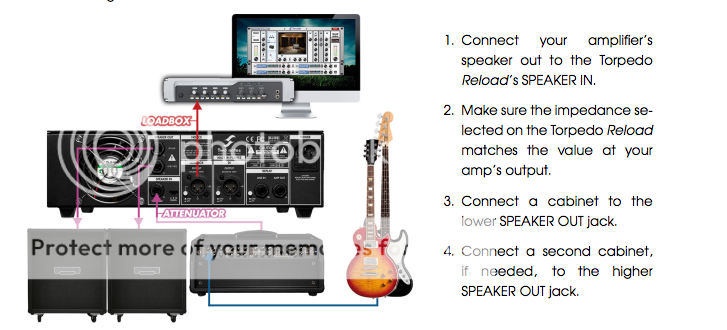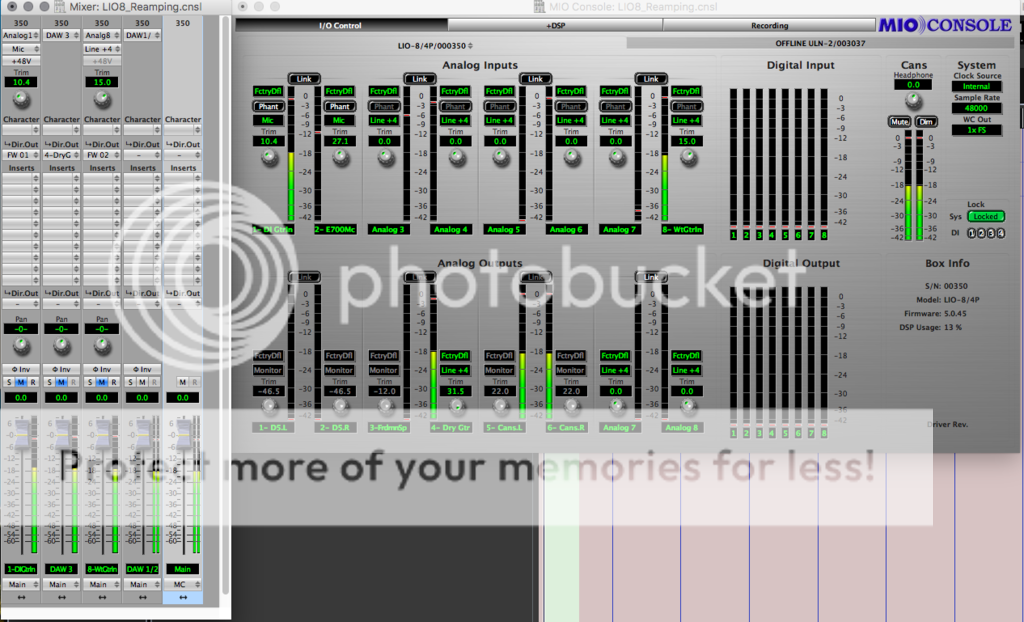Hi
I am using a Two Notes Torpedo Reload reamp box, and running my DI signal into my Mic input 1 on the LIO-8. Then recording this signal in the DAW, outputting it through Analog4 Line out, it gets reamped, and comes back through Analog8 Line in.
The tone I get is less than desirable (it was perfectly fine with the ULN-2D with the exact same set up). The tone is sterile and lifeless and has a high shrill quality to it. I feel this is an issue with the strength of the signal being sent to the reamp box (i.e. Analog4 Line out for me). But when I try to adjust the output Trim, it tops out at 31.5 and hardly has any gain increase.
Does anyone know what the issue could be here? Any MH LIO-8 owners out there?
Much appreciate your assistance.
I am using a Two Notes Torpedo Reload reamp box, and running my DI signal into my Mic input 1 on the LIO-8. Then recording this signal in the DAW, outputting it through Analog4 Line out, it gets reamped, and comes back through Analog8 Line in.
The tone I get is less than desirable (it was perfectly fine with the ULN-2D with the exact same set up). The tone is sterile and lifeless and has a high shrill quality to it. I feel this is an issue with the strength of the signal being sent to the reamp box (i.e. Analog4 Line out for me). But when I try to adjust the output Trim, it tops out at 31.5 and hardly has any gain increase.
Does anyone know what the issue could be here? Any MH LIO-8 owners out there?
Much appreciate your assistance.



